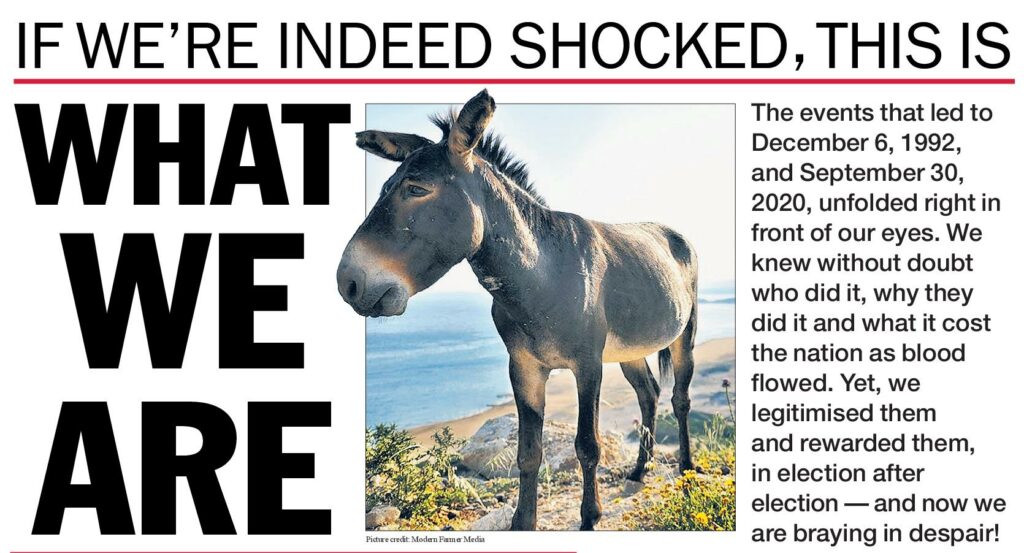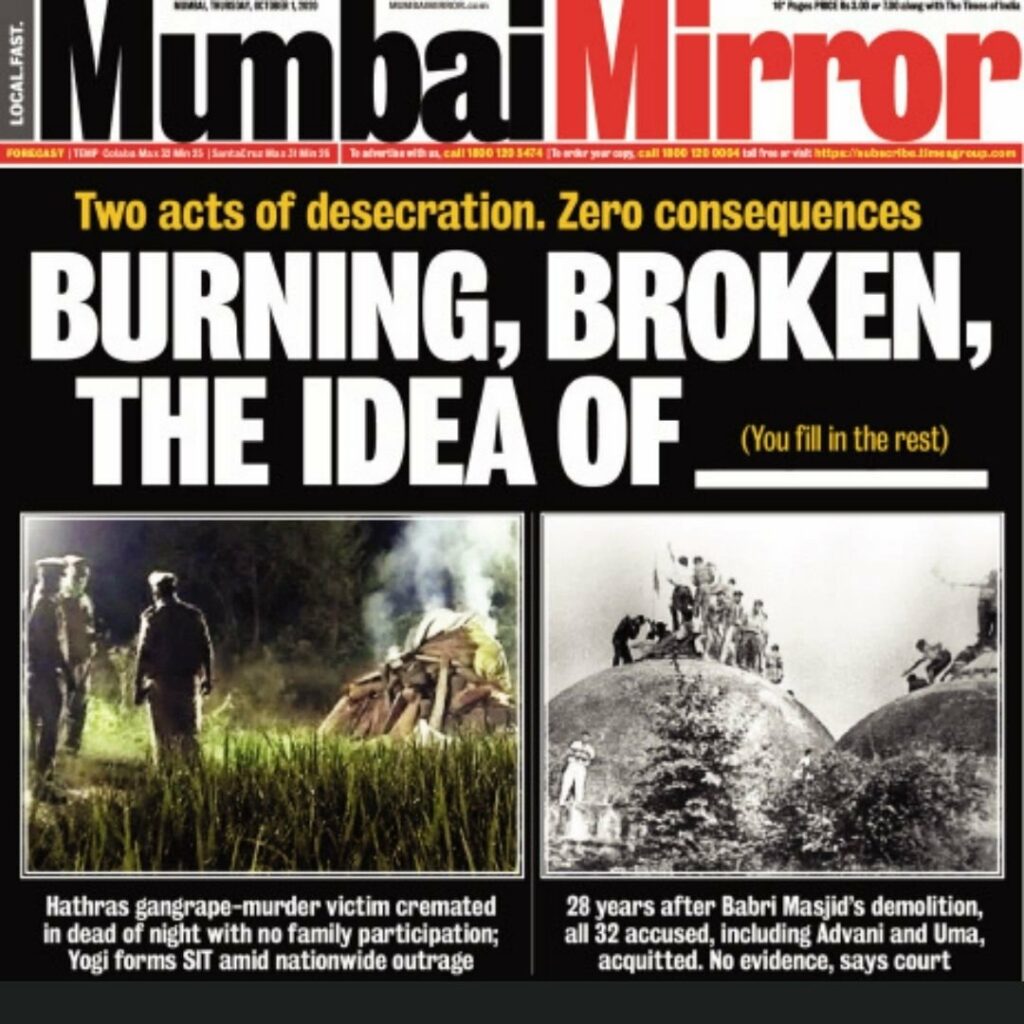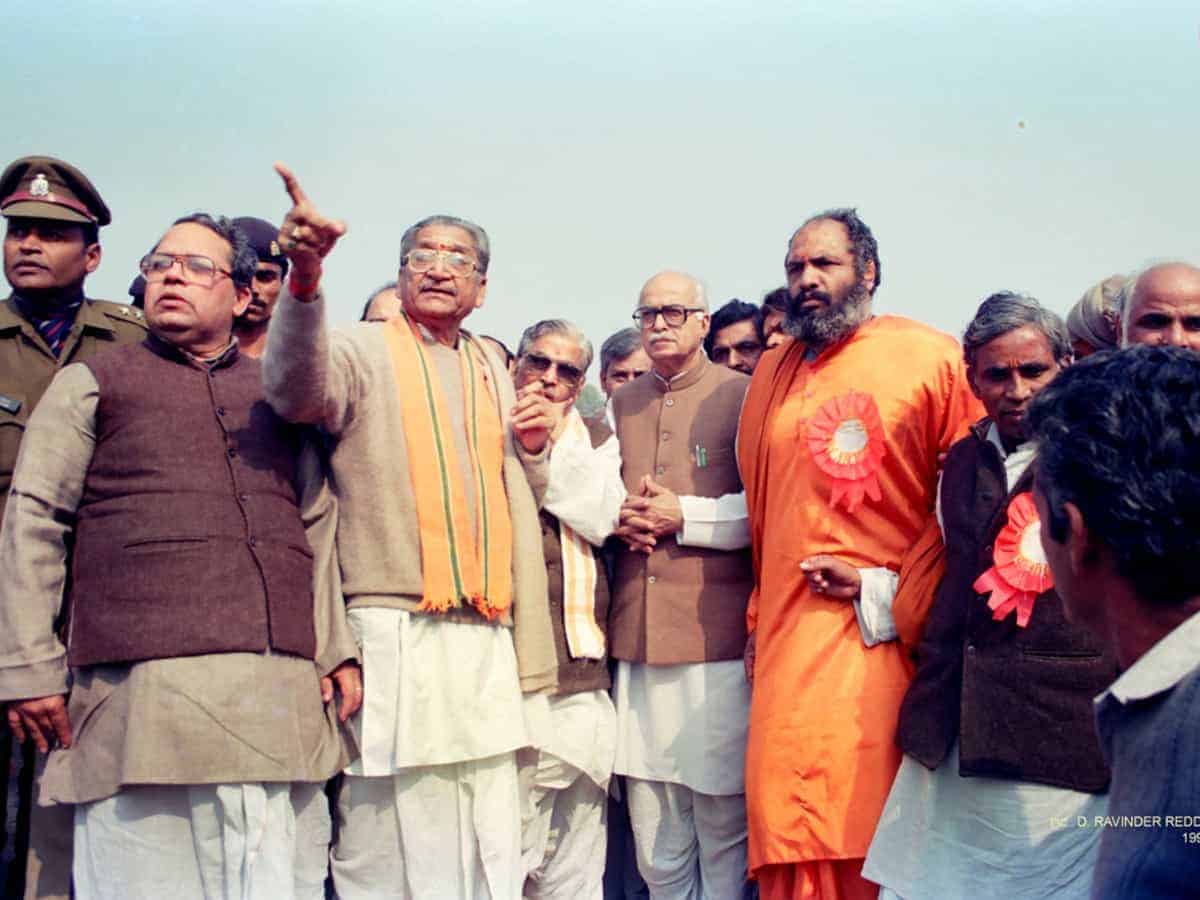Hyderabad: On October 1, the morning after a special court of Central Bureau of Investigation (CBI) in Lucknow acquitted all 32 accused in the 28-year-old Babri Masjid demolition case, front-pages of popular English dailies strongly criticized the judgment, with some even pushing the CBI to challenge the verdict.
The CBI’s special court judge said that the demolition was “not pre-planned” and that the accused were “trying to stop the mob and not incite them”. He added that there was not enough evidence against the accused and that the court could not prove the authenticity of the audio and video evidence provided by the CBI. Bharatiya Janata Party (BJP) leaders Lal Krishna Advani, Murli Manohar Joshi, Kalyan Singh and Uma Bharti were among those accused of criminal conspiracy and other charges.
The Babri demolition verdict also coincided with the brutal and hurried cremation of the 19-year-old rape victim in Hathras, Uttar Pradesh, with her family saying police had forcibly performed the last rites late at 3 am at night even though they wanted to bring her body home one last time.
While newspaper articles were more or less on expected lines, Kolkata-based The Telegraph deserves special mention. Here’s a look at what that daily, along with others, published in their front pages today:
Telegraph India: This is what we are!

Known for its anti-establishment stand and anti-Narendra Modi stand in particular, The Telegraph delivered scathing front page (attack?), which featured a half-page photograph of a donkey, along with a tongue-in-cheek headline declaring: If we’re indeed shocked, this is… WHAT WE ARE.
Next to the photograph, the text read: “The events that led to December 6, 1992, and September 30, 2020, unfolded right in front of our eyes. We knew without doubt who did it, why they did it and what it cost the nation as blood flowed. Yet, we legitimized them and rewarded them, in election after election — and now we are braying in despair!”
The editorial page contained strong-worded opinions too.

Telegraph also carried the story of the Hathras cremation with a headline, “Brutalised girl’s body hijacked by the police.”
Mumbai Mirror: Burning, Broken and the idea of ____

Mumbai Mirror attempted to cite the twin examples of the hurried Hathras cremation and the demolition as a mark of the deterioration of India’s democracy. The headline read: Two acts of desecration. Zero consequences, followed by the headline: BURNING, BROKEN, THE IDEA OF (You fill in the rest).
The Hindu, Indian Express, Times of India and Hindustan Times
The most-circulated English dailies– The Hindu, Indian Express, Times of India and Hindustan Times carried main highlights of the special CBI court’s judgment at the top of their respective front pages too. However, all three of the newspapers published scathing editorials on the judgment calling the demolition an ‘egregious violation of rule of law,’ Wednesday’s verdict gives an institutional sheen to the Ram Janmabhoomi movement.
Calling it a painful chapter in India’s judiciary, the editorials echoed that questions about the criminal investigation, lack of accountability and the precedent set were “worrying.”
Vernacular dailies take a stand too
“Dosh Karo Noi” (It was no one’s fault) was the front-page headline in Anandabazar Patrika. A report below it, titled “In Babri, all 32 are innocent”, opened on a scathing note. “No one would have thought– No one demolished the Babri Masjid,” the first line read.
“Kutra Ledu!” (No conspiracy) read the headline of Telugu-daily Andhra Jyoti. Tamil-daily Dinamalar led with a headline that screamed “acquittal!”

